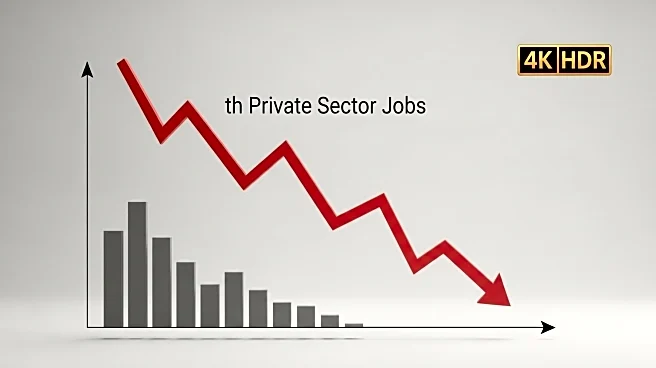What's Happening?
The latest labor market reports indicate that hiring rates in the U.S. have reached their lowest levels since 2009. According to data compiled by the Chicago Federal Reserve, the unemployment rate remained relatively stable at 4.34% in September, just shy of the highest level since October 2021. The hiring rate decreased to 45.2%, a drop of 0.4 percentage points from August. Meanwhile, the layoff rate remained steady at 2.1%. The central bank district has introduced a new dashboard of labor market indicators to provide insights during the ongoing government shutdown, which has limited access to traditional economic data. Additionally, outplacement firm Challenger, Gray & Christmas reported a 37% decline in layoff announcements for September, although the year-to-date planned furloughs are the highest since 2020.
Why It's Important?
The decline in hiring rates to levels not seen since 2009 highlights significant challenges in the U.S. labor market. This situation is compounded by the current government shutdown, which has created a data blackout, forcing economists to rely on alternative data sources. The stability in unemployment rates suggests a stagnant job market, which could have broader implications for economic growth and consumer confidence. The high level of planned furloughs indicates potential future instability in employment, which could affect household incomes and spending. Businesses and policymakers may need to adapt strategies to address these labor market challenges, potentially influencing future economic policies and labor regulations.
What's Next?
As the government shutdown continues, reliance on alternative data sources will likely persist, affecting how economists and policymakers assess the labor market. The Federal Reserve's new dashboard may become a critical tool for understanding labor trends in the absence of traditional data. Businesses may need to prepare for potential fluctuations in hiring and layoffs, while policymakers might consider interventions to stabilize the job market. The ongoing situation could prompt discussions on the resilience of the U.S. labor market and the need for contingency plans during data blackouts.











